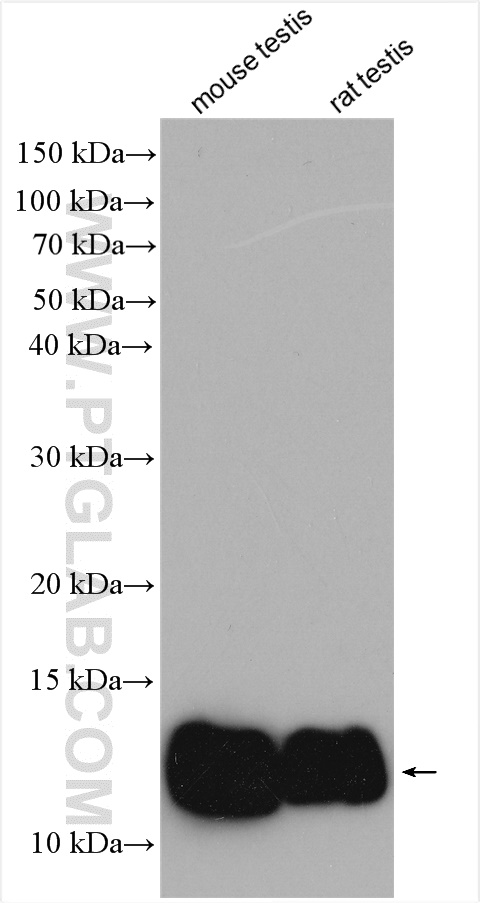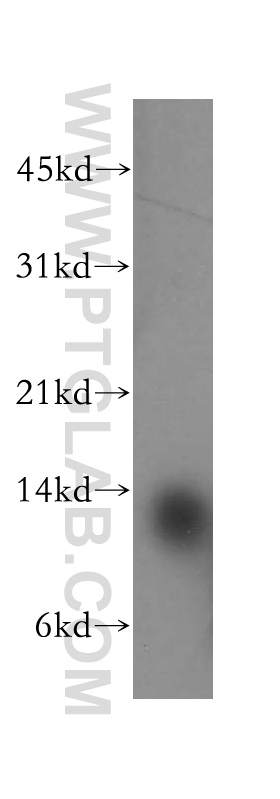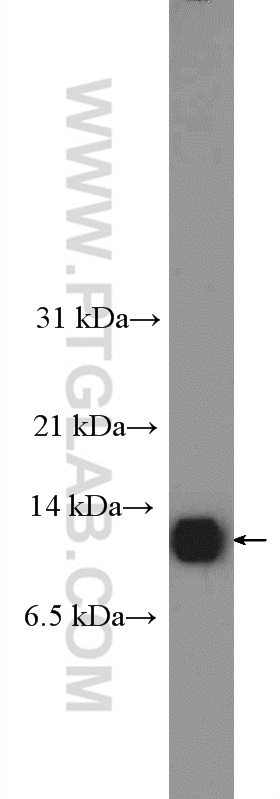验证数据展示
经过测试的应用
| Positive WB detected in | mouse testis tissue, rat testis tissue, human brain tissue |
推荐稀释比
| 应用 | 推荐稀释比 |
|---|---|
| Western Blot (WB) | WB : 1:1000-1:4000 |
| It is recommended that this reagent should be titrated in each testing system to obtain optimal results. | |
| Sample-dependent, Check data in validation data gallery. | |
产品信息
13433-1-AP targets ACYP1 in WB, IHC, IP, ELISA applications and shows reactivity with human, mouse, rat samples.
| 经测试应用 | WB, ELISA Application Description |
| 文献引用应用 | WB, IHC, IP |
| 经测试反应性 | human, mouse, rat |
| 文献引用反应性 | human |
| 免疫原 | ACYP1 fusion protein Ag4237 种属同源性预测 |
| 宿主/亚型 | Rabbit / IgG |
| 抗体类别 | Polyclonal |
| 产品类型 | Antibody |
| 全称 | acylphosphatase 1, erythrocyte (common) type |
| 别名 | Acylphosphatase 1, ACYP1, ACYPE |
| 计算分子量 | 99 aa, 11 kDa |
| 观测分子量 | 11 kDa |
| GenBank蛋白编号 | BC035568 |
| 基因名称 | ACYP1 |
| Gene ID (NCBI) | 97 |
| RRID | AB_2242288 |
| 偶联类型 | Unconjugated |
| 形式 | Liquid |
| 纯化方式 | Antigen affinity purification |
| UNIPROT ID | P07311 |
| 储存缓冲液 | PBS with 0.02% sodium azide and 50% glycerol , pH 7.3 |
| 储存条件 | Store at -20°C. Stable for one year after shipment. Aliquoting is unnecessary for -20oC storage. |
实验方案
| Product Specific Protocols | |
|---|---|
| WB protocol for ACYP1 antibody 13433-1-AP | Download protocol |
| Standard Protocols | |
|---|---|
| Click here to view our Standard Protocols |
发表文章
| Species | Application | Title |
|---|---|---|
Drug Resist Updat Targeting ACYP1-mediated glycolysis reverses lenvatinib resistance and restricts hepatocellular carcinoma progression
| ||
Int Immunopharmacol Pterostilbene suppresses the growth of esophageal squamous cell carcinoma by inhibiting glycolysis and PKM2/STAT3/c-MYC signaling pathway |


